Why Saw Teeth Profiles Look Mis-sized

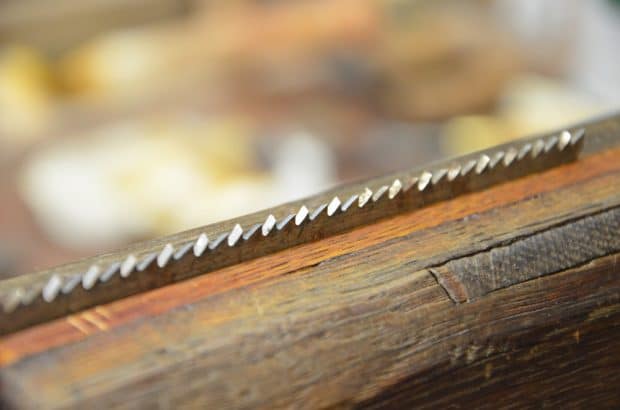
Some have queried why the teeth of the saw were uneven in height, with the teeth alternating high and low. There are a couple of reasons this happens. Sometimes, often, when you buy a secondhand saw the teeth can be way out. In such circumstances I often file the teeth to get to clean steel before I begin resizing and reshaping the teeth to even out disparity. After the teeth are filed thus, I go back in and top the saw teeth to get the height down and then I work either side of the wide flats atop the teeth to equal out the size. This is simply a question of forcing the file laterally and down into the gullet rather than just down into the gullet. On the other hand, when you see a crosscut saw from one side, the teeth can look remarkably uniform but with the alternate teeth being smaller than the adjacent ones. That’s how it might look in this image here.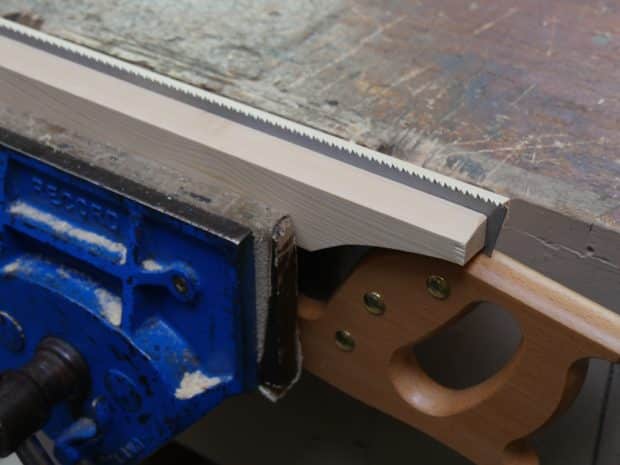
I took a couple of images I took for my book to bring closer visual for contrasting ripcut and crosscut tooth profiles. On eBay mosts saws will be sold as crosscut saws because most people selling them have no idea what the difference is.
In this image you can see the side profile of the crosscut saw. You can see how only the inside of these teeth are profiled with twin bevels culminating in a pinnacle tooth profile and cutting point rather than a chisel point. By inside I mean that the tooth set creates an inside aspect and an outside aspect. Above you can see the teeth either side of the centre one are flat on the outside, but on the face you cannot see the teeth have the same profile as the centre one. This creates the dynamic of pointed teeth we need for some (not all) crosscutting work.
Here you can compare the ripcut pattern which has no bevelling to the inside of the teeth. This is the easiest of the two methods of sharpening; that’s crosscut and ripcut patterns. The tooth sizing in the above images are exactly the same.
Here is a wider aspect of the crosscut tooth pattern so you can see that the teeth do look large and small yet the points are all the same height. It all depends on how the light catches the tooth profile.


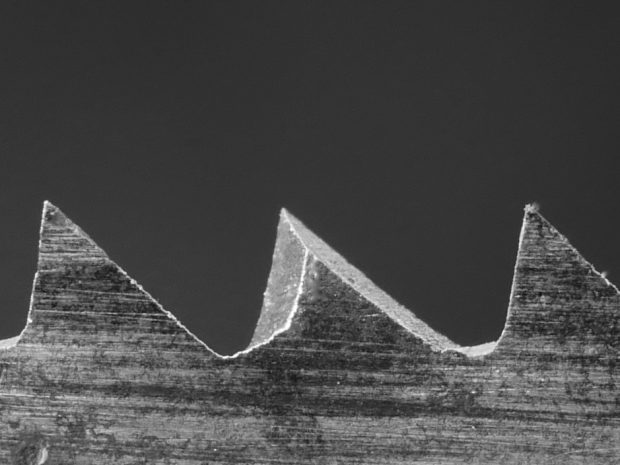
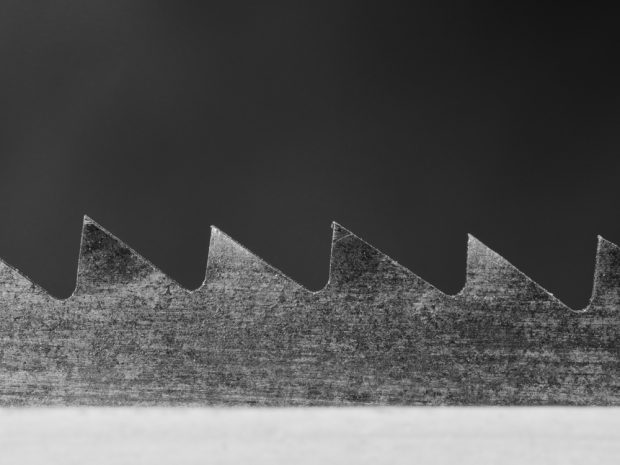
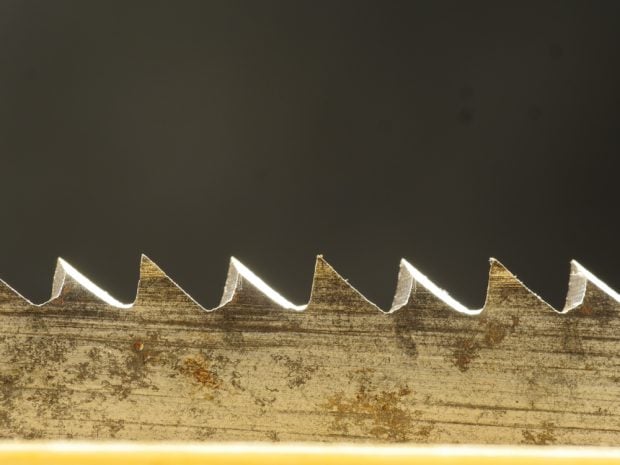
Your explanation of the visual differences between rip and cross-cut saw teeth is as usual, both precise and concise. Nice photo’s too. Thank you. I had through your previous videos, blogs et al, a good idea of the differences but this just perfectly confirms it all. The optical illusion sometimes seen in photographs is interesting to note and now explained should remove doubts from some observers.
I am also enthused to make the magnetic saw vice shown in your previous post. It so perfectly sums up the KISS principle, keep it simple stupid.
I already use magnetic tool holders both in my work van (self employed electrician) and in my kitchen (the 15″ long ones – bought cheaply from Lidl) and I have not noticed any residual magnetic properties on the tools or kitchen utensils. I think the magnetisation of steel would be more permanent if the magnet was continuously and consistantly wiped across the tool, not just placed on the tool.
I am very much looking forward to getting your book 🙂
Hi Paul,
I understand all the above, I think perfectly… There’s just one thing I am still not 100% clear on, and I’ve tried searching all over the internet without joy… that’s which way round the “set” goes on a crosscut …
I THINK you may have cleared it up with your sentence;
“You can see how only the inside of these teeth are profiled with twin bevels culminating in a pinnacle tooth profile and cutting point rather than a chisel point.”
Does that mean that in the first picture in this blog the middle tooth, (the one which we can see has filed angles on it’s sides), is pointing away from us when set, and the other two teeth, (which have the flat sides, towards us…
And as I write that I realise a simpler way to put it is that when “setting” a crosscut it’s “flat side outwards”
Is that right?
Thanks again,
Regards,
Matt Sims
You’ve got it.
Thank you!
Regards,
Matt